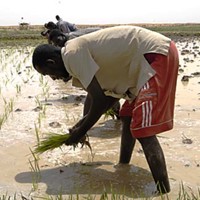
This summer’s drought in the U.S. has triggered the third major food price spike in the past five years, leaving the world’s poor to wonder if global leaders learned anything from the first two. To judge by their actions so far, they haven’t. The food crisis of the past five years has indeed energized food and agricultural policymakers, bringing long-overdue attention to chronic problems, from underinvestment in smallholder agriculture to overreliance on high-input industrial production. It has seen welcome new institutions brought into being and existing ones revitalized, stimulating new investment in agricultural research and serving as a reminder that […]


